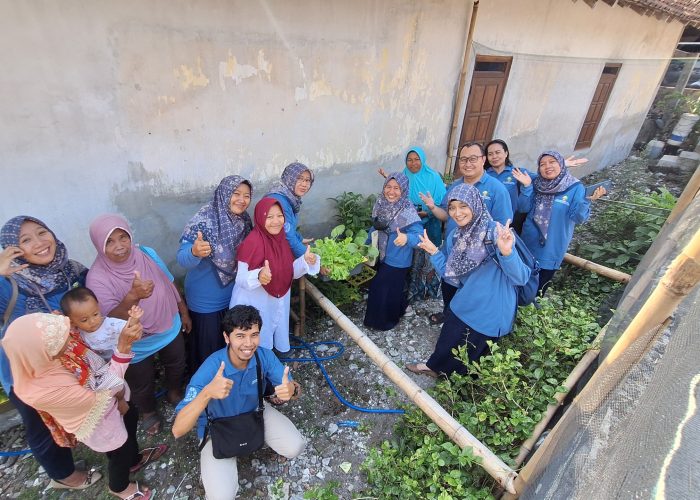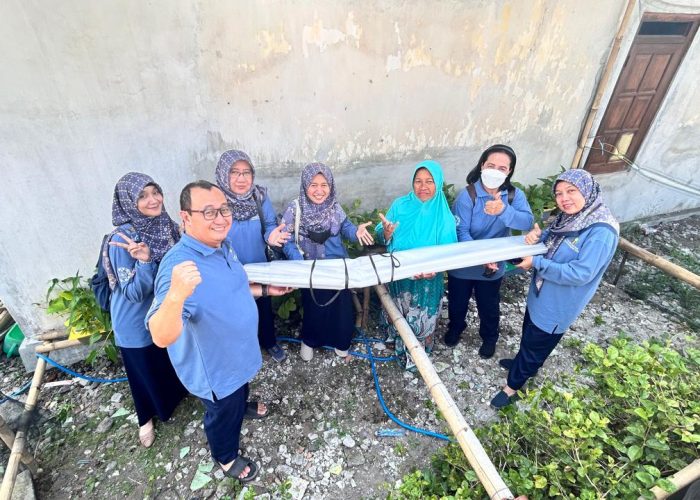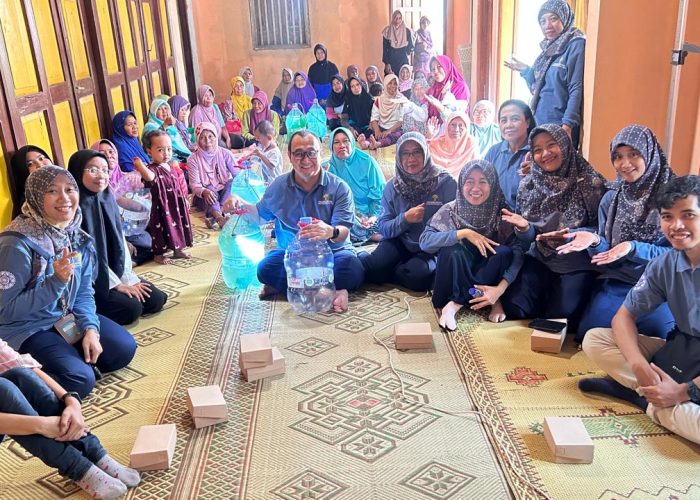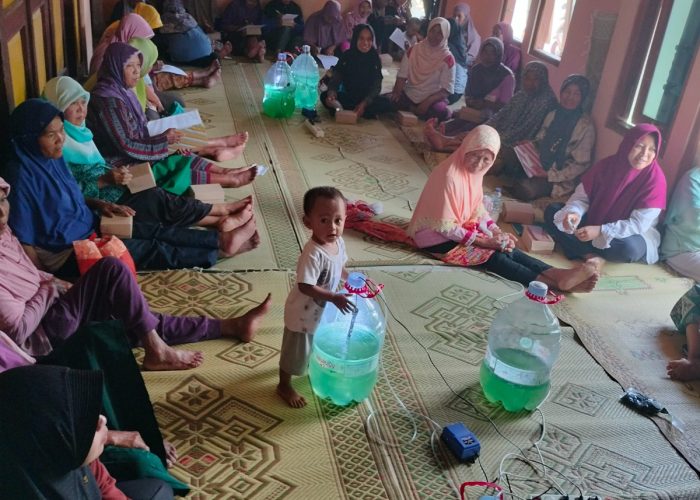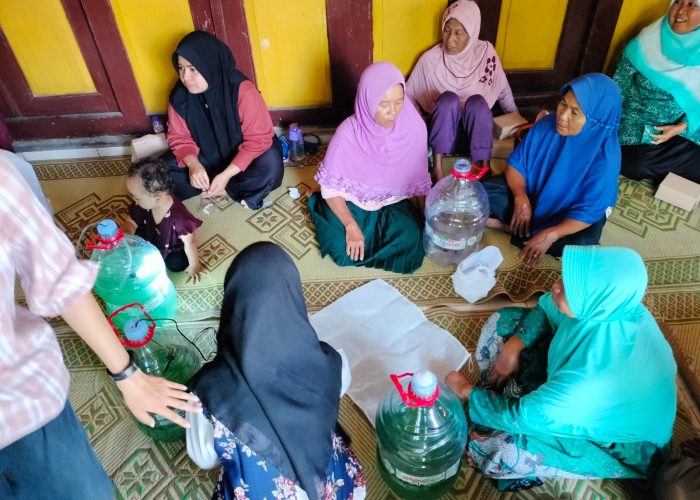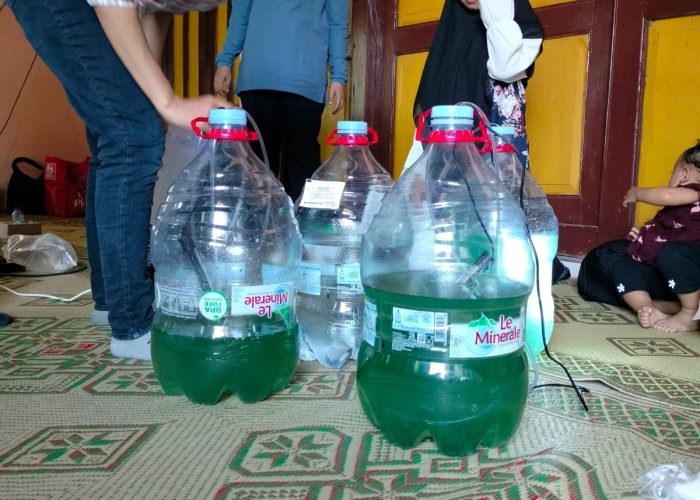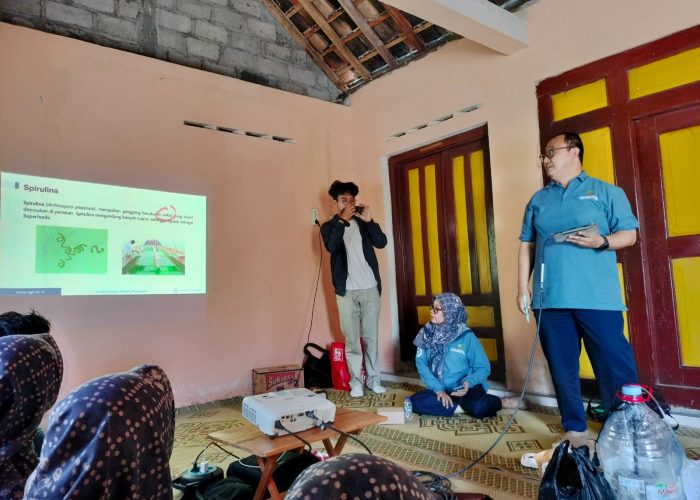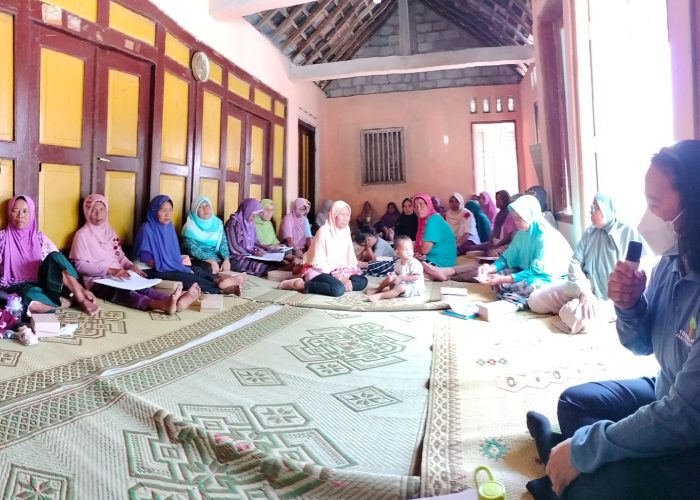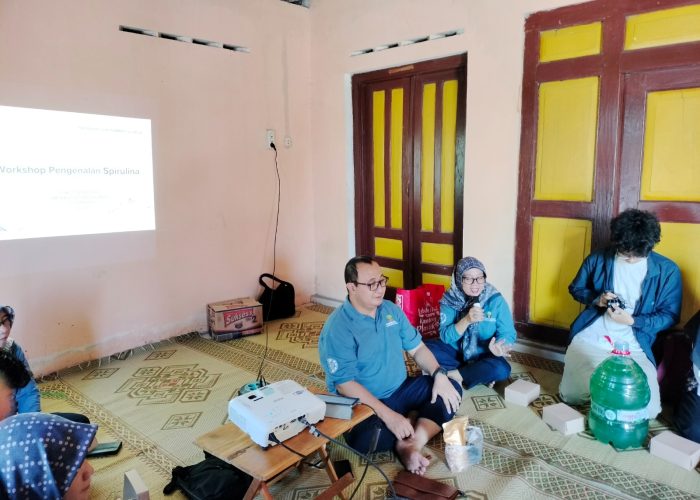Monday, September 30 2024, the Community Service team of Wukirsari Village Partner, held its third activity in Wukirsari Village, Kapanewon Cangkringan, Sleman Regency. The activity was opened and guided by Dr. Maryani, M.Sc. which was continued with remarks from the team leader, Mrs. Rina Sri Kasiamdari, S.Si., Ph.D. At this third meeting, Dr. Eko Agus Suyono, S.Sc., M.App.Sc. explained about microalgae with the theme “Introduction to Spirulina: Cultivation and Benefits”. The 35 participants of Sruni village PKK, were told that Spirulina is algae that is very small in size, green in color, spiral-shaped, and can be found in any water body, whether in rivers, seas or ponds. This algae is very rich in nutrients and healthy. Spirulina contains high protein, up to 70%, the same as protein from eggs. Apart from increasing endurance, reducing the risk of diabetes and cholesterol, it can also support children’s growth to avoid stunting. “The harvested products are in the form of powder, such as flour, which can then be made into capsules or various products, and sold at relatively high prices,” said Dr. Eko while showing gallons containing Spirulina culture and samples of Spirulina powder which had been neatly packaged to the participants who were enthusiastic about listening to the presentation. “This powder product can be added directly to various foods: mixed with warm rice, added to soupy foods, or mixed into drinks,” he added.
Dr. Eko also explained how to cultivate Spirulina, namely by mixing the Spirulina starter into clean water and adding fertilizer. Apart from that, by adjusting the pH, providing an aerator connected to a hose, and a lamp, the Spirulina culture can be harvested in around 7-21 days or when the color is bluish green. Harvesting is done by filtering the culture using a nylon filter, then squeezing it until a paste is obtained. Next, the paste is exposed to the sun to dry.
In this activity, a method for cultivating Spirulina was also demonstrated by using unused gallons of mineral water. This session was assisted by students, namely Renata Adaranyssa Egistha Putri, Muhammad Farrel Zharif Zidane, and Finka Aulia. Spirulina starter is mixed with clean water in a 1:1 ratio. Fertilizer, in which the composition is the result of research by the microalgae team under the supervision of Dr. Eko, then added to the culture mixture as a source of nutrients that support the growth of Spirulina. The aerator and light are then installed into the gallon. This culture is grown until it is ready to be harvested when the color is bluish green. Aerators and lights can be periodically turned on and off alternately day or night. This session was then continued with a discussion regarding the material and a quiz with door prizes which increased participants’ enthusiasm in answering questions.
In this third activity, the entire Wukirsari partner village team was involved, namely Prof. Dr. Diah Rachmawati, S.Si., M.Sc., Mrs. Utaminingsih, S.Si., M.Sc., Dr. Aprilia Sufi Subiastuti, S.Si., Dr. Wiko Arif Wibowo, S.Sc., Novita Yustinadiar, S.Si., M.Sc., and Dr. Siti Nurbaiti, S.Si. It is hoped that today’s activity will broaden the knowledge of people who may not know much about microalgae, especially Spirulina. This activity is expected to support the achievement of Indonesia’s Sustainable Development Goals (SDGs), namely Healthy and Prosperous Lives (3); No Hunger (2); No Poverty (1).
After the presentation of the Spirulina theme was finished, the lecturer team and participants went together to the hydroponic planting site, which was the theme that had been presented at the previous meeting. Various plants grown hydroponically, such as kale, lettuce and mustard greens, grow very well and are ready to be harvested. The team from the Faculty of Biology UGM also provided UV plastic for a semi-greenhouse which was initiated by PKK of Sruni Village.

